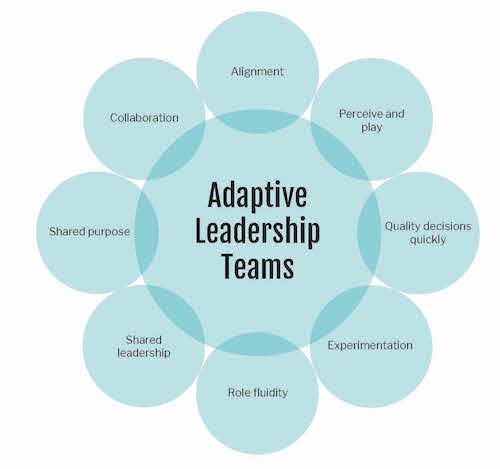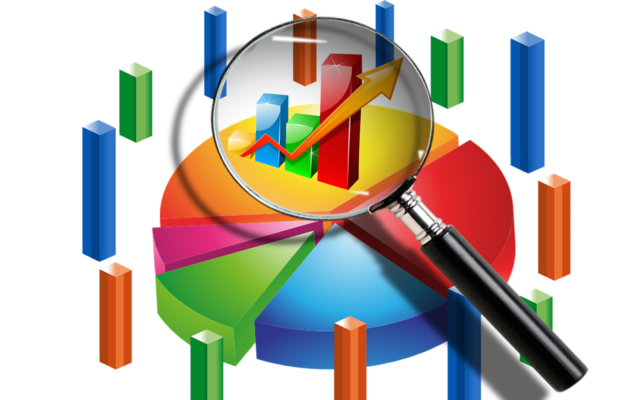In my last series of blogs, I explored the “Adaptive Leadership model. In this series I am exploring Adaptive Leadership Teams. Leadership is a team effort. Everyone has to lead and be adaptive.
My Adaptive Leadership Teams model is shown below.

Alignment
Adaptive leadership teams have total alignment. Just as a soccer team has a shared goal, the adaptive leadership team is completely aligned about the desired outcomes while respecting the diversity of experience, opinions, and perceptions within the team. They take time to become totally aligned and once that is achieved they have the same goal guiding their moves.
Every player is able to articulate that goal in a consistent manner.
Perceive and play
Information technology now allows adaptive leaders to read the signs (perceive) and react accordingly (play).
This organization has continuous learning embedded into its being. Adaptive leadership teams use experimentation and learning. They get continuous customer feedback to ensure they deliver what the customer wants and needs. Adaptive leadership teams are managed based on outcomes and a base of collaboration.
The soccer team has to perceive the state of the game, which includes pitch quality, weather, opposition fitness, and fatigue. It perceives the line-up at kick-off so that it has a sense of how it is going to play, perceive the strengths and weakness of how it will play, and how that can be countered.
Adaptive leadership teams have ‘scouts’ who, before the next match, will watch the opposition and start to build collateral with all the intelligence gathered. The intelligence will be presented to the players and then the ‘perceive and play’ cycle continues. Intelligence includes the speed and size of players, style of play, and strengths and weaknesses.
Information technology is also enhancing the ability to perceive and play. Numerous digital cameras now track every player on the pitch and collect 10 data points per second for the 22 players, which equates to 1.4 million data points per game. This data is analysed and enables managers, coaches, and players to gain insights into what exactly happened in each game, on and off the ball.
In the same way, organizations use real-time data to perceive what is happening outside the organization and what is changing in their industry. The data is obtained from data mining, market research, dashboards etc. and once analysed, adaptive leadership teams can look for indicators of threats or opportunities. Indicators mean they can choose to play or not.
Game score
Just like soccer teams, organizations have to have adaptive leadership teams if they are to beat the opposition and win the competition.
They have to align around a common goal, perceive what is happening outside the organization and respond accordingly. Sound decisions need to be made quickly and teams will experiment to discover what works and what doesn’t.
There is role fluidity and anyone can play in any position depending on what is required. There is shared leadership with a shared purpose and widespread collaboration and innovation as a result. When organizations have adaptive leaders and adaptive leadership teams, they are true champions.
My next posts will explore further aspects of the Adaptive Leadership Teams model.
Article by channel:
Everything you need to know about Digital Transformation
The best articles, news and events direct to your inbox
Read more articles tagged: Featured, Leadership







